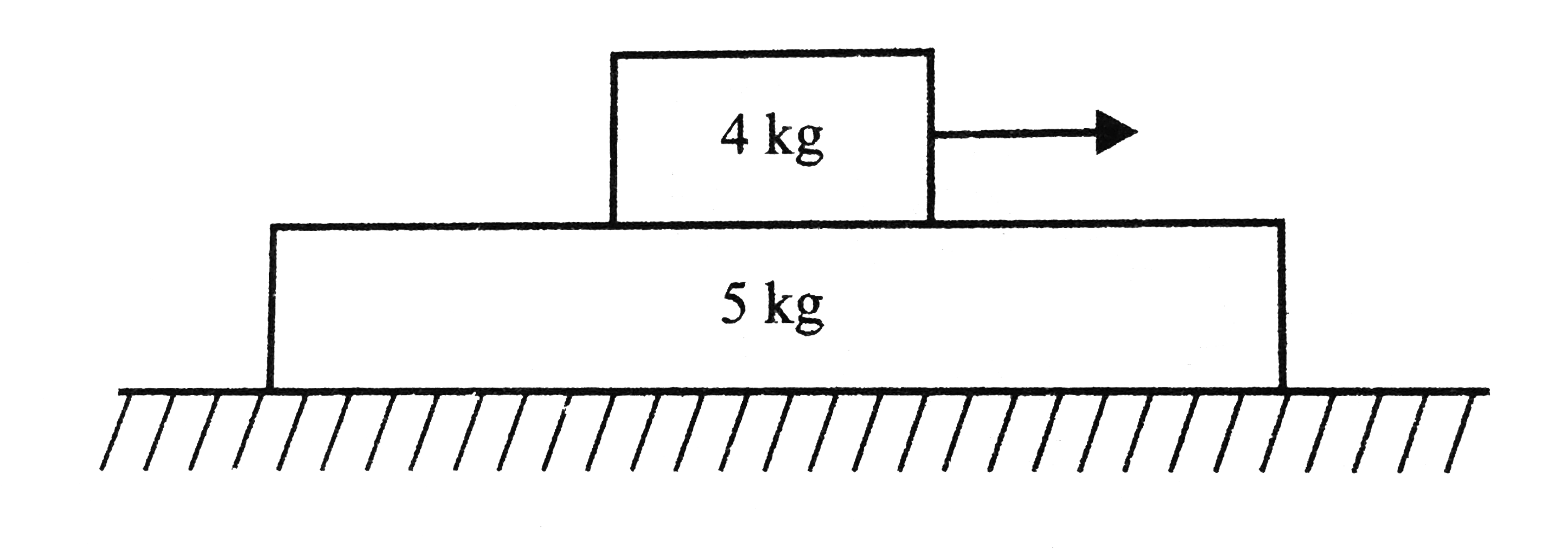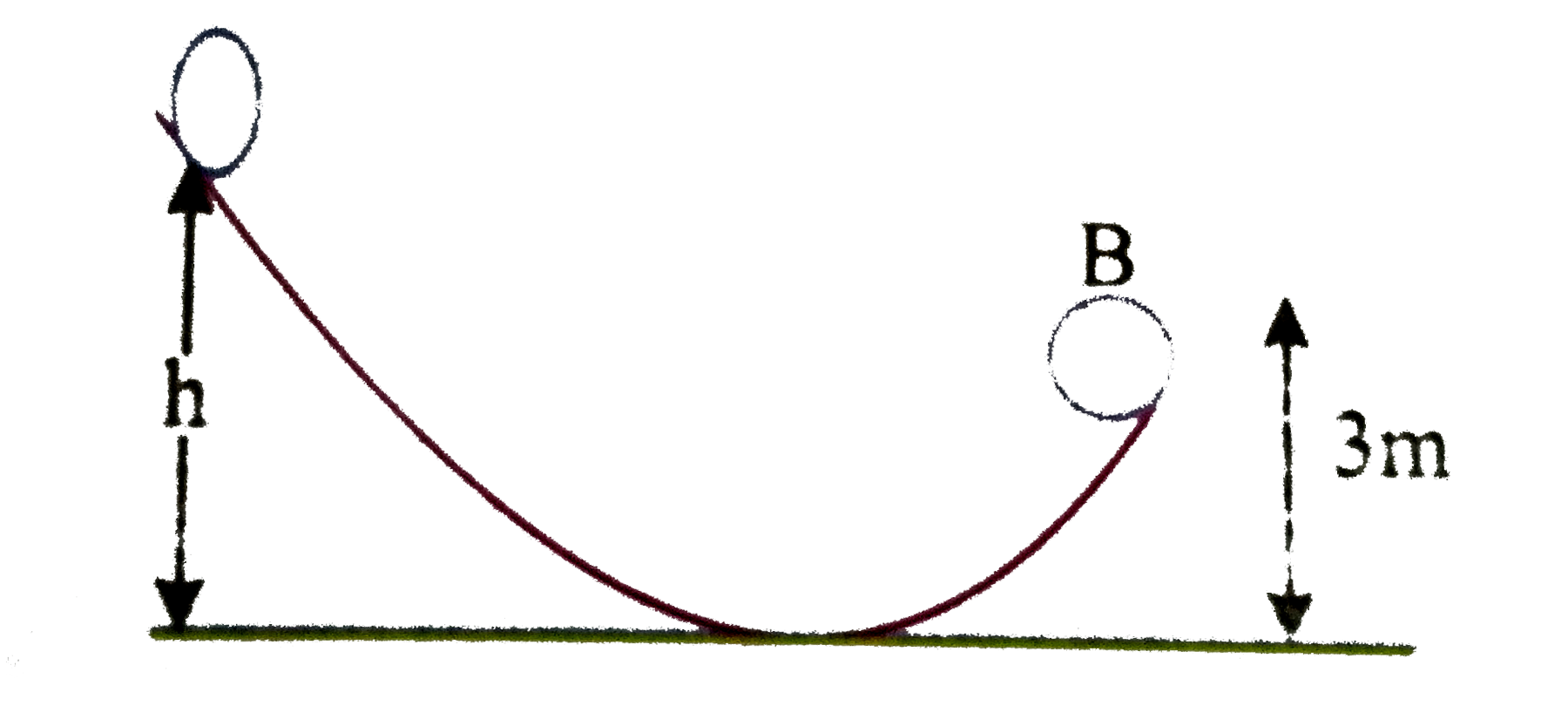An engine pumps water through a hose pipe. Water passes through the pipe and leaves it with a velocity of 2ms1. The mass per unit length of water in the pipe is 100kgm−1. What is the power of the engine?
100W
400W
200W
800W
The correct Answer is:(1)
P=V2dMdt=V3dMdl
Topper's Solved these Questions
- BOOK - NARAYNACHAPTER - WORK , ENERGY & POWER EXERCISE - EXERCISE -III54videos
WORK , ENERGY & POWER
- BOOK - NARAYNACHAPTER - WORK , ENERGY & POWER EXERCISE - EXERCISE IV43videos
WORK , ENERGY & POWER
- BOOK - NARAYNACHAPTER - WORK , ENERGY & POWER EXERCISE - EXERCISE -II (C.W)75videos
WORK , ENERGY & POWER
- BOOK - NARAYNACHAPTER - WAVESEXERCISE - Exercise-IV56videos
WAVES
- BOOK - NARAYNACHAPTER - WORK POWER AND ENERGYEXERCISE - Level-VI (Integer)12videos
WORK POWER AND ENERGY
Similar Questions
300J of work is done in slinding a 2 kg block up an inclined plane of height 10m. Taking g =10m/s2 , work done against friction is
02:43View SolutionA large slab of mass 5kg lies on a smooth horizontal surface, with a block of mass 4kg lying on the top of it. The coefficient of friction between the block and the slab is 0.25. If the block is pulled horizontally by a force of F =6N, the work done by the force of friction on the slab, between the instants t=2s and t=3s, is (g=10ms−2)
 02:49View Solution
02:49View SolutionA particle is moved from (0, 0) to (a, a) under a force a F=(3ˆi+4ˆj) from two paths. Path 1 is OP and path 2 is OPQ. Let W1 and W2 be the work done by this force in these two paths. Then,
01:26View SolutionThe transverse displacement y(x,t) of a wave on a string is given by y(x,t)=e−(ax2+bt2+2√(ab)xt). This represents a :
01:57View SolutionA ball leaves the track at B which is at 3m height from bottom most point of the track. The ball further rises upto 4m height from the bottom most point before falling down. Find h (in m), if the track at B makes an angle 30∘ with horizontal.
 .01:26View Solution
.01:26View SolutionAn engine pumps water continously through a hose. Water leave the hose with a velocity v and m is the mass per unit length of the Water jet. What is the rate at Which kinetic energy is imparted to water?
01:26View SolutionAn engine pumps water through a hose pipe. Water passes through the pipe and leaves it with a velocity of 2ms1. The mass per unit length of water in the pipe is 100kgm−1. What is the power of the engine?
03:49View SolutionAn engine water continuously through a hose. Water leaves the hose with a velocity v and m is the mass per unit length of the kinetic energy is imparted to water ?
01:57View Solutionइंजन रबर की नली से लगातार पानी पंप करता है । पानी नली को वेग V तथा जेट के प्रति एकांक लंबाई के द्रव्यमान m की दर से छोड़ता है । पानी को किस दर से, ऊर्जा प्राप्त होती है -
01:26View SolutionAn engine water continuously through a hose. Water leaves the hose with a velocity v and m is the mass per unit length of the kinetic energy is imparted to water ?
View SolutionAn engine water continuously through a hose. Water leaves the hose with a velocity v and m is the mass per unit length of the kinetic energy is imparted to water ?
02:19View Solutionएक पम्प का इंजन नलिका पाइप में जल फेकता है, जल पाइप में से गुजरता हुआ 2 मी/से वेग से बहार निकलता है। पाइप का प्रति लम्बाई एकै का द्रव्यमान 100 किग्रा/मी है, तो इंजन का सामर्थ्य होगा।
02:12View Solutionएक इंजन एक होज पाइप के द्वारा लगातार पानी चढ़ाता है। पानी वेग v से होज से निकलता है तथा पानी की धार के प्रति एकांक लम्बाई का द्रव्यमान m है। पानी को गतिज ऊर्जा किस दर से प्राप्त होती है?
View SolutionAn engine water continuously through a hose. Water leaves the hose with a velocity v and m is the mass per unit length of the kinetic energy is imparted to water ?
03:18View SolutionA machine continuously pumps through a pipe. The water leaves the pipe at a velocity v and is equal to the mass m of one unit length of the pumped water. What is the rate at which water is given kinetic energy?
02:07View SolutionAn engine pumps water continuously through a hose Water leaves the hose with a velocity .v. and .m. mass per unit length of the water jet. What is the rate at which kinetic energy is imparted to water.
01:42View Solution

